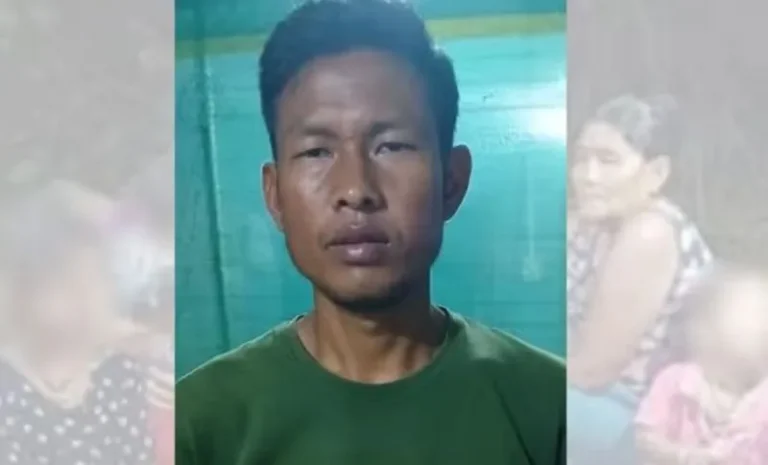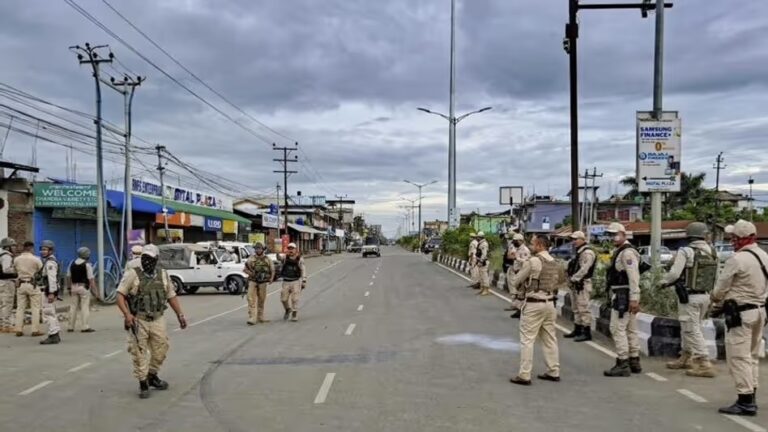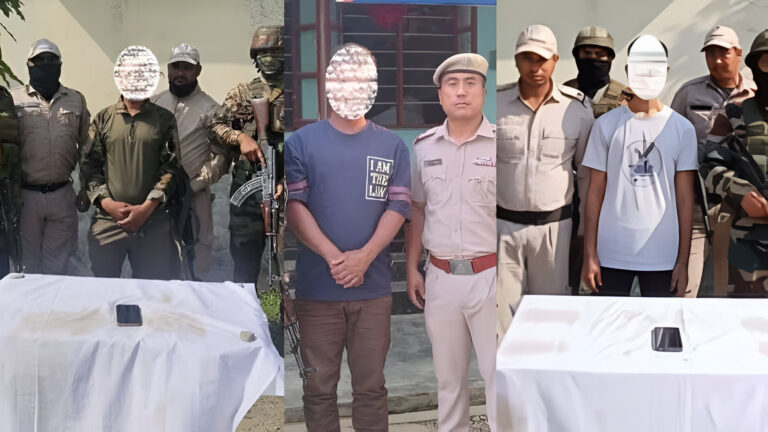Manipur: Bamboo Stretchers and the Healthcare Crisis in Tamenglong
Summary:
In a heart-wrenching incident on October 19, 2024, a 33-year-old from Nallong village, Manipur, was carried on a bamboo stretcher to Nagaland for medical treatment. The villagers of Nallong face dire conditions due to the lack of medical facilities, proper roads, electricity, and mobile connectivity. Despite multiple pleas to the government, the area remains neglected, leading to tragic healthcare struggles for its residents.
Long Article:
Introduction
Imagine being so cut off from basic services that a trip to the hospital means being carried on a bamboo stretcher for miles. This might sound like a scene from history, but it’s a current reality for the people of Nallong, a remote village in Manipur’s Tamenglong district. This situation is not just a one-off event but a frequent occurrence due to the severe lack of infrastructure in the region. On October 19, 2024, a resident from this village was transported on a makeshift bamboo stretcher for urgent medical care, and the incident once again shines a light on the grim healthcare crisis in this neglected area.
What Happened in Nallong?
The recent event unfolded in Nallong village, located in the Kuilong area of Manipur’s Tamenglong district. A 33-year-old patient, suffering from a critical condition, had no choice but to be carried by villagers on a bamboo stretcher. The destination? Peren district in neighboring Nagaland, a long and arduous journey made out of sheer necessity due to the lack of any healthcare facilities in their village.
This isn’t the first time the villagers have had to resort to such measures. Just a few months ago, on Independence Day 2024, six critically ill patients were also transported on bamboo stretchers across rough terrain in a desperate attempt to reach medical care.
A Bigger Problem: Lack of Infrastructure
The root of the problem lies in the complete absence of basic infrastructure in Nallong and nearby areas. There are no health centers, no proper roads, no electricity, and no mobile or internet connectivity. For the villagers, the closest healthcare facilities are either in Tamei, Manipur, or Peren in Nagaland, both of which are hours away on foot.
Villagers have repeatedly appealed to the authorities for help, but their pleas have gone unheard. According to Chamchangbou Pamai, the president of the Nallong Youth Club, the region has been systematically neglected for years. Residents have suffered numerous tragedies due to the absence of healthcare and proper roads, and yet, no significant action has been taken.
The Role of the Government: What’s Missing?
When we talk about the government’s role in this situation, it’s easy to point fingers and say they’ve failed, but what does that really mean? For Nallong and surrounding areas, it means the absence of something as fundamental as the right to healthcare. It means watching family members suffer or even die because they can’t access medical care.
Despite the constitutional right to life and health, these villagers are being deprived of their most basic rights. Appeals to local leaders, MLAs, and even the Health Minister of Manipur have yielded no results, leaving the villagers in a state of helplessness.
Bamboo Stretchers: A Symbol of Survival and Struggle
A bamboo stretcher, in most people’s minds, belongs in a history book. But in Nallong, it’s a tool of survival. These makeshift carriers are crafted from the abundant bamboo trees in the region, used to ferry the sick and the injured over rocky terrain, across rivers, and through dense forests to the nearest roads or hospitals.
While bamboo is a strong and flexible material, it is by no means an ideal mode of transport for critically ill patients. Imagine being jostled on a rough forest path for hours, lying on nothing but bamboo poles, while every bump and jolt causes more pain and discomfort. For many in Nallong, this isn’t imagination—it’s reality.
Why Are Roads So Important?
At the heart of this crisis is the lack of motorable roads. Without proper roads, there’s no way to get an ambulance or even a vehicle into Nallong and the surrounding villages. Even though the state government has been repeatedly informed of the dire condition of these roads, no action has been taken to repair them.
The rainy season makes matters worse, turning the already dilapidated dirt paths into mudslides and impassable swamps. It’s not just healthcare that’s affected—trade, communication, and even education are at risk. Without roads, the village is effectively cut off from the rest of the world, left to fend for itself.
Healthcare Rights Denied
In India, healthcare is a fundamental right enshrined in the Constitution. So, how is it that in 2024, there are still regions where people have to be carried on bamboo stretchers to access medical care? The situation in Nallong raises serious questions about the distribution of healthcare resources and the role of government in ensuring equal access to services.
While urban areas in Manipur have seen some improvements in healthcare infrastructure, the rural areas have been left behind. Inhabitants of Nallong and the Kuilong area are systematically deprived of their healthcare rights. The absence of even a basic health center means that simple ailments can quickly turn deadly without timely intervention.
The Human Cost: Tragedies Piling Up
It’s not just about inconvenience—it’s about lives lost. In the past few years, several villagers have died because they couldn’t reach a hospital in time. Pregnant women, elderly residents, and children are the most vulnerable, as the physical strain of being carried over rough terrain can exacerbate their conditions.
The psychological toll on the villagers is also immense. Watching loved ones suffer and knowing that help is so far away adds a layer of helplessness and despair. The bamboo stretcher, while a testament to the resilience of the villagers, is also a stark symbol of their abandonment by the state.
Calls for Action: Will Things Change?
The villagers of Nallong have not remained silent. They’ve made repeated calls to the Directorate of Health Services, their local MLAs, and the state Health Minister. They’ve appealed for the construction of a health center, for road repairs, for basic infrastructure that would allow them to live with dignity. But so far, those calls have fallen on deaf ears.
Will this latest incident finally spark action? The villagers hope so, but they’ve been disappointed too many times before to believe that change will come quickly.
What Needs to Be Done?
The solution to Nallong’s crisis is not a complicated one, but it requires commitment from the government. Here are some immediate steps that could make a world of difference:
- Build a Health Center: A small, well-equipped health center in Nallong would provide life-saving services to the villagers, reducing the need for long journeys to distant hospitals.
- Repair the Roads: Fixing the roads would make it possible for vehicles and ambulances to reach Nallong, providing quicker access to medical facilities.
- Provide Mobile Connectivity: Communication is critical in medical emergencies. Setting up mobile towers in the region would allow villagers to call for help when needed.
- Invest in Basic Infrastructure: Electricity, clean water, and internet access are all vital components of a healthy, functioning community. Investing in these services would improve the quality of life for Nallong’s residents.
Conclusion
The use of bamboo stretchers in 2024 is a shocking reminder of the healthcare inequality that exists in India’s rural areas. The residents of Nallong village are resourceful, resilient, and determined to survive—but they shouldn’t have to rely on bamboo stretchers to access basic medical care. It’s time for the government to step up and provide the infrastructure that these communities so desperately need.
FAQs
- Why do villagers in Nallong use bamboo stretchers?
Due to the lack of motorable roads and healthcare facilities, villagers have no choice but to transport critically ill patients using makeshift bamboo stretchers. - What healthcare services are available in Nallong?
There are no health centers in Nallong, with the nearest facilities located in Tamei, Manipur, and Peren, Nagaland, both several hours away on foot. - What other infrastructure is lacking in the area?
Nallong lacks electricity, proper roads, mobile connectivity, and internet access, all of which contribute to the healthcare crisis. - Has the government taken any action?
Despite repeated appeals, the government has yet to take significant action to improve infrastructure or provide medical facilities in Nallong. - What can be done to improve the situation?
Immediate steps include building a health center, repairing roads, and improving basic infrastructure such as electricity and mobile connectivity.




